
The Illustrated Man is a 1951 collection of 18 science fiction short stories by American writer Ray Bradbury. A recurring theme throughout the stories is the conflict of the cold mechanics of technology and the psychology of people. It was nominated for the International Fantasy Award in 1952.

Stanley Grauman Weinbaum was an American science fiction writer. His first story, "A Martian Odyssey", was published to great acclaim in July 1934; the alien Tweel was arguably the first character to satisfy John W. Campbell's challenge: "Write me a creature who thinks as well as a man, or better than a man, but not like a man." Weinbaum wrote more short stories and a few novels, but died from lung cancer less than a year and a half later.
"Escape!" is a science fiction short story by American writer Isaac Asimov. It was first published as "Paradoxical Escape" in the August 1945 issue of Astounding Science Fiction and reprinted as "Escape!" in the collections I, Robot (1950) and The Complete Robot (1982).
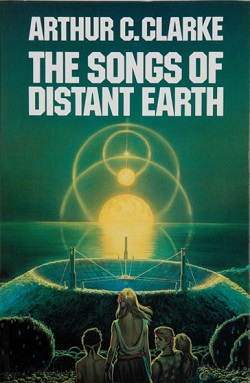
The Songs of Distant Earth is a 1986 science fiction novel by British writer Arthur C. Clarke, based upon his 1958 short story of the same title. He stated that it was his favourite of all his novels. Clarke also wrote a short step outline with the same title, published in Omni magazine and anthologised in The Sentinel in 1983.
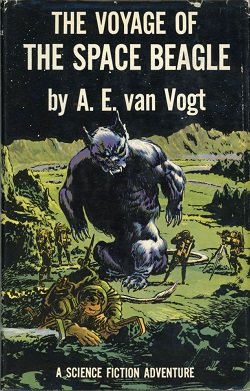
The Voyage of the Space Beagle (1950) is a science fiction novel by Canadian-American writer A. E. van Vogt. An example of space opera subgenre, the novel is a "fix-up" compilation of four previously published stories:

Jesus on Mars is a 1979 science fiction novel by American writer Philip José Farmer, set on Mars and involving an alien civilization. It makes social commentary on a just society and on religious belief.

It! The Terror from Beyond Space is an independently made 1958 American science fiction horror film, produced by Robert Kent, directed by Edward L. Cahn, that stars Marshall Thompson, Shawn Smith, and Kim Spalding. The film was distributed by United Artists as a double feature with Curse of the Faceless Man.

Sleepers of Mars is a collection of five early stories by British writer John Wyndham, as by John Beynon Harris, published after his death, in 1973 by Coronet Books.

The Sands of Mars is a science fiction novel by English writer Arthur C. Clarke. While he was already popular as a short story writer and as a magazine contributor, The Sands of Mars was also a prelude to Clarke's becoming one of the world's foremost writers of science fiction novels. The story was published in 1951, before humans had achieved space flight. It is set principally on the planet Mars, which has been settled by humans and is used essentially as a research establishment. The story setting is that Mars has been surveyed but not fully explored on the ground. The Sands of Mars was Clarke's first published novel.

Mission of Gravity is a science fiction novel by American writer Hal Clement. The novel was serialized in Astounding Science Fiction magazine in April–July 1953. Its first hardcover book publication was in 1954, and it was first published as a paperback book in 1958. Along with the novel, many editions of the book also include "Whirligig World", an essay by Clement on creating the planet Mesklin that was first published in the June 1953 Astounding.
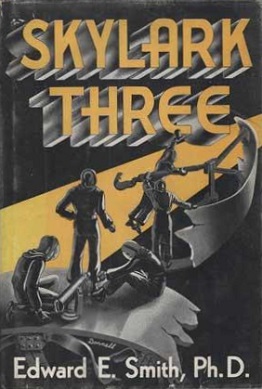
Skylark Three is a science fiction novel by American writer E. E. Smith, the second in his Skylark series. Originally serialized through the Amazing Stories magazine in 1930, it was first collected in book form in 1948 by Fantasy Press.
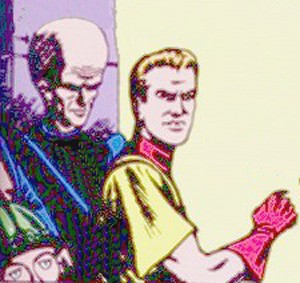
Chris KL-99 is a 1950s science fiction comic book character whose adventures were published by National Comics, now known as DC Comics. He first appeared in Strange Adventures #1, and was created by science fiction author Edmond Hamilton and artist Howard Sherman.
"The Planet of Doubt" is a science fiction short story by American writer Stanley G. Weinbaum that was first published in the October 1935 issue of Astounding Stories. It is Weinbaum's third story featuring Hamilton Hammond and Patricia Burlingame, a sequel to "Parasite Planet" and "The Lotus Eaters".
"The Lotus Eaters" is a science fiction short story by American writer Stanley G. Weinbaum originally published in the April 1935 issue of Astounding Stories. "The Lotus Eaters" was Weinbaum's fifth published story, and is a sequel to "Parasite Planet".
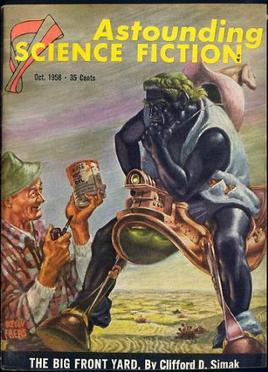
"The Big Front Yard" is a science fiction short story by American writer Clifford D. Simak which won a 1959 Hugo Award for Best Novelette. It was also included in The Science Fiction Hall of Fame, Volume Two (1973) after being voted one of the best novellas up to 1965.
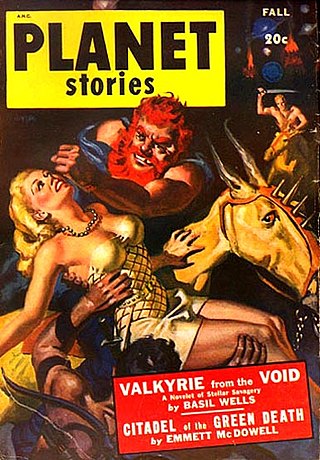
"Mars Is Heaven!" is a science fiction short story by American writer Ray Bradbury, originally published in 1948 in Planet Stories. "Mars Is Heaven!" was among the stories selected in 1970 by the Science Fiction Writers of America as one of the best science fiction short stories published before the creation of the Nebula Awards. As such, it was published in The Science Fiction Hall of Fame Volume One, 1929–1964. It also appears as the sixth chapter of The Martian Chronicles, revised as "The Third Expedition."

Marooned on Mars is a juvenile science fiction novel written by American writer Lester del Rey. It was published by John C. Winston Co. in 1952 with illustrations by Alex Schomburg.

Quest for the Future is a science fiction novel by Canadian-American writer A. E. van Vogt. It was first published by Ace Books in 1970.
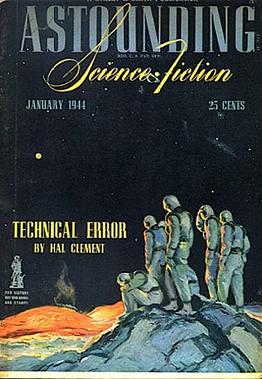
Far Centaurus is a science fiction short story by Canadian-American writer A. E. van Vogt, first published in Astounding Science Fiction in 1944. Writer and critic P. Schuyler Miller called it "unforgettable and unforgotten."

"Black Destroyer" is a science fiction short story by Canadian-American writer A. E. van Vogt, first published in Astounding SF in July 1939. It has been marked as the story that represents the start of the Golden Age of Science Fiction.
This page is based on this
Wikipedia article Text is available under the
CC BY-SA 4.0 license; additional terms may apply.
Images, videos and audio are available under their respective licenses.

















